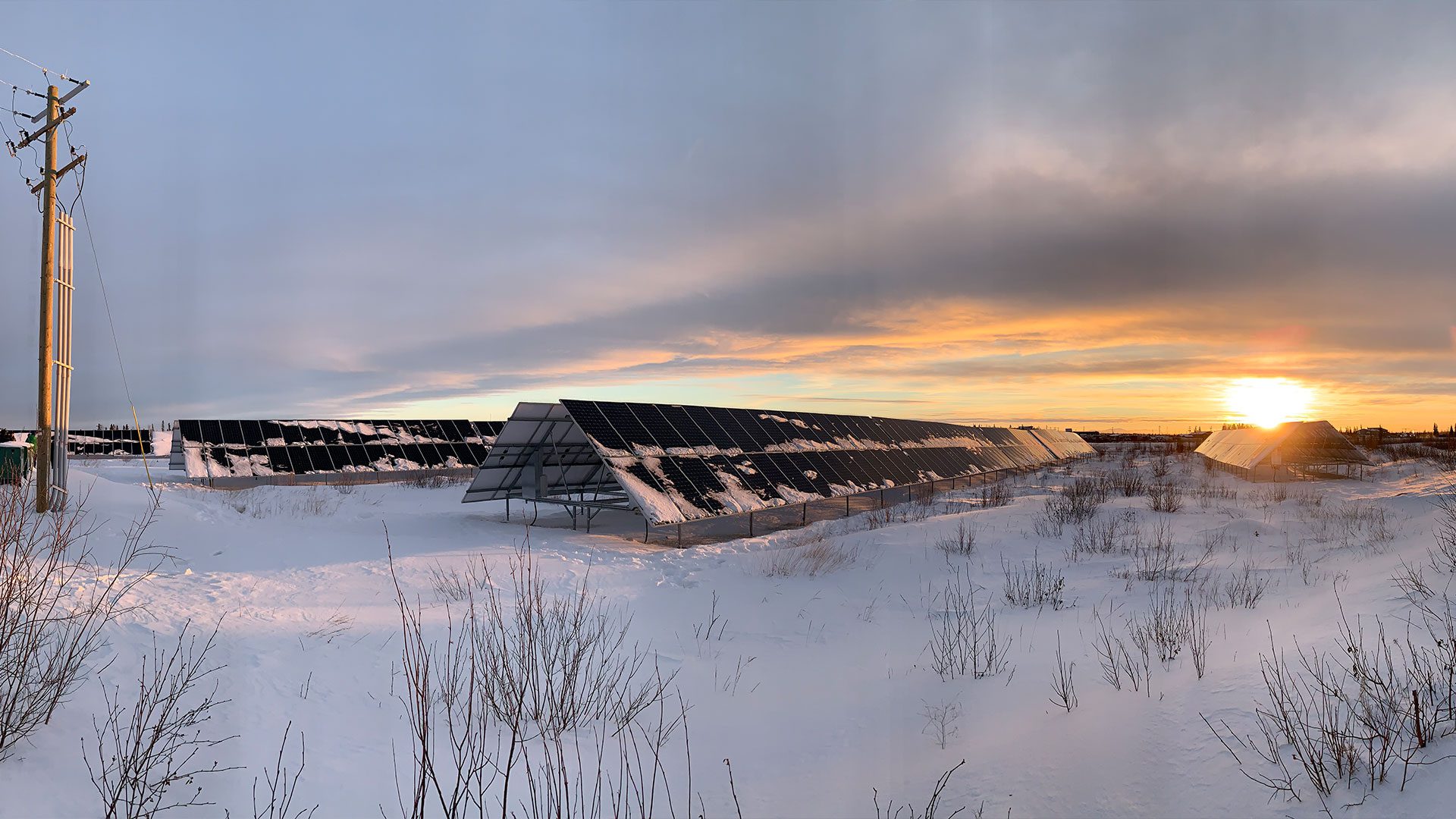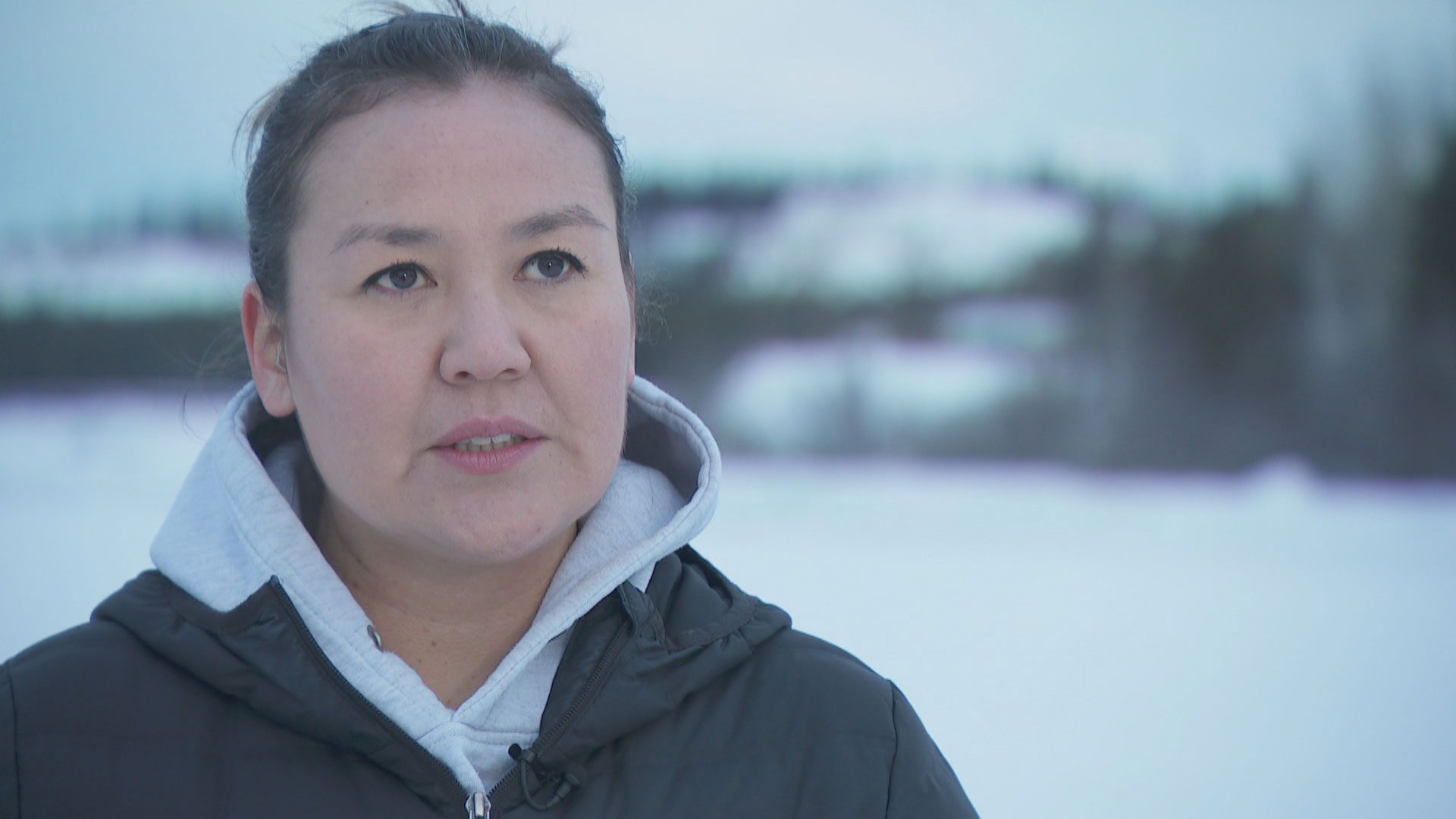If we’re in a war against climate change, then Canada’s north is arguably on the front line of that existential battle.
The northern part of Canada is where climate change is having some of its most dramatic effects – and it’s also where much of the electricity consumed gets generated by diesel, unhelpful in that it makes more greenhouse gases.
And as Madeleine Redfern, the Inuk former mayor of Iqaluit, points out – diesel power generation is expensive too.
Redfern says Iqaluit alone spends over $100 million every year on diesel.
“That’s $110 million of fossil fuel that our community’s burning for only 8,000 people,” says Redfern. “So we really do need and want an energy solution, but we also want an abundant energy solution because DeBeers has a mine nearby.
“They’re looking at potentially mining diamonds – and you can’t mine diamonds on diesel or solar or wind. It’s going to need a big baseload power.”
An effective way to do it she believes, is with small modular nuclear reactors that could hypothetically be mass-produced to lower costs.
“It is considered one of the cleaner, cleanest energy sources because it effectively has very, very little carbon output,” says Redfern.

Redfern is one of the energy experts bringing forward their ideas about arctic and subarctic energy development in this week’s APTN Investigates: Nuclear North.
APTN met with Redfern at the United Nations COP 15 Conference on Biodiversity in Montreal.
Part of Redfern’s agenda there was related to her work on the federal government’s Indigenous Advisory Council on Small Modular Reactors or SMRs as they’re also known.
The federal government is funding the development of SMRs under its SMR Action Plan – which says in order to get to net zero carbon emissions by 2050, Canada is going to need more nuclear power.
Notably, the word “nuclear” tends to be left out of the SMR abbreviation by industry proponents, who say SMRs will be safer than full scale reactors and can help reduce the long-term dangers associated with spent nuclear fuel [which for some SMR designs gets re-processed].
There is however considerable debate among academics and others who study the nuclear industry about the unproven efficacy and economic viability of SMRs.
Also, given the short timeline of the potential climate catastrophe we’re faced with, there are concerns about the development and regulatory work that will be required before any reactors get built.
The company Moltex, for example, which is one of the leaders of the Canadian SMR development pack – [it’s currently developing one in New Brunswick] – aims to have it operable by 2030.
But Redfern sees SMRs as an attractive option for not just Iqaluit but for many places in the north.
“One hundred seventy-seven Indigenous communities across the country are diesel dependent – actually almost, almost 300 are partially diesel dependent,” says Redfern, “So we need to find solutions and that may include some renewable as well as hydro, but we need to completely get off of diesel, which means we’re going to need some big solutions.”
And in Redfern’s envisioning, an investment in SMRs could also be an investment in Indigenous equity, given the number of northern, largely Indigenous communities that could potentially economically benefit from their installation.
“Part of the work that the national Indigenous Advisory Council on SMRs is doing, is actually looking at Indigenous equity,” says Redfern. “What does that look like and what does that mean? So, can we take possibly the government investments into this new technology and convert it into Indigenous equity?
“There may be communities that are interested in that.”
It’s important to note that Redfern has a personal business interest in these matters as well – she’s an advisor with the Ultra Safe Nuclear Corporation and runs a company interested in laying underwater fiber optic cable in the Arctic.
Redfern says energy requirements in the north should take into account military surveillance needs as Canada tries to maintain arctic sovereignty, as well as power requirements for bringing projects such as her fiber optic network to fruition.
“Because we know that NORAD modernization is happening,” says Redfern, “the defense sector needs infrastructure in Canada’s north to protect our country and to protect our continent. I’m working on transformative technologies, so one of the projects I’m involved in is building 4,500 km of subsea cable into Canada’s Arctic and possibly ensuring that a portion is a smart, capable science monitor…
“So we can actually get the baseline data in the marine environment and then make informed decisions on that, whether it’s for environmental protection, climate change, and of course, knowing what’s happening in there for national security and for continental defense.”

But in competition with SMRs, there are other kinds of carbon-reduced and carbon-free energy projects already being rolled out in the north.
APTN joined an international group of scientists, government administrators and technical experts at a conference in the Yukon this January to get a look at what else is being studied for further implementation.
ARENA stands Arctic Remote Energy Networks Academy – and this group is focused on the integration of renewable energy in the circumpolar Arctic region.
Niels Erik Hagelqvist came all the way from Greenland to meet with the ARENA group in Whitehorse.
Hagelqvist works for Greenland’s nationally-owned power utility Nukissiorfiit, where they are looking at many of the same options for lower carbon energy development as northern Canada.
“Because we are in a transition process in Greenland, where we are going from diesel to renewable energy,” says Hagelqvist, “And one of the best things we can do in Greenland is hydropower. We have a huge hydropower potential in Greenland, but the second best we can do, or the cheapest we can do after hydropower is actually solar energy. But of course, everyone knows that in the Arctic we have nearly half a year with completely darkness.
“But then we have, during the summertime, 24 hours of daylight. That means we can make a lot of production from solar. And that means we can, if we are lucky, supply it a big amount of our energy from the solar during the summer period.”
But unlike here in Canada, Hagelqvist says in Greenland, there is too much worry about the dangers of nuclear for SMRs to even be considered.
“The European Union have decided for some months ago that nuclear power is actually a renewable energy – but it’s a political decision in Greenland, and we have a zero tolerance for nuclear,” says Hagelqvist, “ and that means it’s not possible to do that.”
Hagelqvist, and the rest of the 30 or so ARENA group were able to see first-hand some of the challenges and successes of delivering electrical power in the Yukon.
While 86 per cent of the energy generated by the utility – Yukon Energy – is renewable [mostly hydroelectric], they do rely on diesel generation – even in the capital Whitehorse – to meet demands.
But there are bold renewable energy projects being taken on by Indigenous communities in the Yukon which the ARENA group visited as part of their conference.
One project the group toured was the biomass heating system built by Teslin T’lingit First Council, a couple of hours drive southwest of Whitehorse.
Waste wood gets shredded and fed into high-efficiency units that boil water to heat buildings in the community – and at full deployment it’s expected the system will reduce heating oil use by 100 thousand litres, using about one thousand oven-dried tonnes of waste wood.
“So it’s a very small amount of wood fiber required to offset a huge amount of heating oil,” says Blair Hogan, a Teslin Tlingit citizen who helped implement the system.
And as it turns out, the boilers aren’t just generating heat.
“We’re generating, you know, tonnes of jobs, like dozens and dozens of jobs,” says Hogan, “So it gets people involved, gets people part of the community in ways that leverage their current skillset.”
As for SMRs, he’s supportive of the idea.
“I think there’s a huge opportunity for nuclear energy,” says Hogan. “When I toured Germany, it was kind of unsettling to see that they were winding down their nuclear program and replacing it with natural gas and coal facilities. I do see that there should be a role for nuclear energy in our clean future. Absolutely.”
The ARENA group also made the trek to see a unique solar energy plant within the arctic circle in Vuntut Gwitchin community of Old Crow, Yukon.

A three-hour flight north of Whitehorse, Old Crow doesn’t get a lot of sun in the dead of winter, which makes it an interesting spot for a giant array of solar panels.
The solar plant is called Sree Vyàa, and with its panels positioned in an east-west orientation to maximize solar generation, it provides 24 percent of the community’s electricity needs, reducing the amount of diesel used each year by 190,000 litres, which lowers greenhouse gas emissions by 780 tonnes carbon dioxide equivalent per year.
The power from the solar array gets sold to the utility and is expected to net about $400,000 a year for the community.
Erika Tizya-Tramm works for the Vuntut Gwitchin government as the strategic lead of stewardship and sustainability, and she’s proud of her community’s solar plant.
“It becomes a part of what they say about Old Crow,” says Tizya-Tramm. “Aside from the land and the beauty. Now it’s the solar project. In fact my house was across from the solar project.
“And what was really cool for me was seeing my kids play with a solar field right across from them. So it’s integrated into their lives a really young age.”
Next up, they’re looking at developing a wind generation plant.
But small modular reactors don’t feel like a good fit to Tizya-Tramm.
“Nuclear is something that’s a bit beyond, you know, your regular on-the-land people,” she says, “but it sounds like it’s going to be another big conversation and not one that the Gwichtin will shy away from, that’s for sure.”











